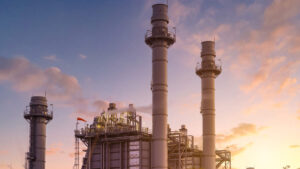Queensland just shipped a test case of ‘green’ hydrogen to Japan

A hydrogen car refuels at a filling station. Pic: Getty
Queensland has just become the first Australian state to ship ‘green’ hydrogen.
The hydrogen that left Queensland today was produced at the Queensland University of Technology’s (QUT) solar cell facility and shipped by JXTG, Japan’s largest petroleum conglomerate.
It’s headed to Japan.
It’s not clear just how much hydrogen was in this shipment or how much it cost to make.
Australia has been lagging on the development of a hydrogen industry, with not much achieved since Western Australia started trialling hydrogen fuel cell buses on Perth streets back in 2004. That trial finished in 2007.
More than a decade later, the country has finally worked out that hydrogen is extremely useful not just for environmental reasons, but also potentially to the economy.
A recent report commissioned by the federal government’s Australian Renewable Energy Agency (ARENA) reckons that with the right conditions, Australia could inject up to $1.7 billion each year into its economy by 2030 by exporting hydrogen.
The key markets for Australia are Japan, South Korea, China and Singapore.
Hydrogen produces only water vapour and air when it is burned, so it is not harmful to the environment.
- Subscribe to our daily newsletter
- Join our small cap Facebook group
- Follow us on Facebook or Twitter
Japan’s government is being particularly aggressive in slashing the emissions of its energy imports.
In April last year, the Australian government announced that a Japanese consortium would build a $500m demonstration plant to convert Victoria’s brown coal to hydrogen.
Making hydrogen the electrochemical way
Professor Ian Mackinnon, from QUT’s Institute for Future Environments, said the green hydrogen exported to Japan was produced by adding water and acid to a chemical called toluene, using solar power as the energy source in the electrochemical conversion process.
“The toluene is converted to a substance called methyl cyclohexane (MCH), which is an energy efficient and safe method for transporting hydrogen,” Professor Mackinnon said.
“In this form, hydrogen can be shipped using conventional road and pipeline infrastructure.
“Once it has arrived at its destination, the renewable hydrogen is extracted from the MCH and the toluene can be re-used in the transportation cycle.”
Going all in on hydrogen
The push for a hydrogen industry in Australia is stepping up, with the topic now getting conferences of its own and political parties making it a key part of their respective election agendas.
Earlier this week, shadow federal assistant minister for climate change, energy and infrastructure Pat Conroy and WA minister Alannah MacTiernan offered a rosy future of hydrogen as a “decarbonising” material at the Australian Hydrogen Energy Summit.
The federal liberals have promised a public consultation process on hydrogen.
Meanwhile, Labor is pitching a $3m plan for an “innovation hub” in Queensland, regulatory change, and directives to ARENA and the Clean Energy Finance Corporation to invest — as a way to accelerate economic decarbonisation.
It’s part of opposition leader Bill Shorten’s $1 billion commitment towards a “National Hydrogen Plan”.
At the same time Queensland Premier Annastacia Palaszczuk announced the state had shipped its first hydrogen, she revealed her government would be chipping in $250,000 for the establishment of a renewable hydrogen pilot plant.
The Queensland government is also planning on releasing its own “hydrogen strategy” later this year.
Meanwhile, Western Australia formed its own Renewable Hydrogen Council in October last year, not long after government-backed CSIRO released what is essentially a “blueprint” for the development of the hydrogen industry in Australia.
UNLOCK INSIGHTS
Discover the untold stories of emerging ASX stocks.
Daily news and expert analysis, it's free to subscribe.
By proceeding, you confirm you understand that we handle personal information in accordance with our Privacy Policy.








